Chapter Five
Mussolini’s Italian L6 Goes to Russia
Although Benito Mussolini provided an entire Italian Army to aid Adolf Hitler on the Eastern Front, he sent pitifully small numbers of tanks and self-propelled guns to support it.Those he did send were woefully inadequate.The only formation with noteworthy armoured units was the 3rd Celere (Mobile) Division ‘Principe Amedeo Duca d’Aosta’, which included the 67th Battaglione Bersaglieri Corazzato armed with the L.6/40 light tank and the 13th Gruppo ‘Cavalleggeri di Alessandria’ equipped with the Semovente L/40 da 47/32 self-propelled gun. Mussolini kept back all his medium tanks, such as the M11/39 and M13/40, to support his ill-fated operations in North Africa and the Balkans. Following his defeats there, his remaining medium armour was kept back for the defence of Sicily and the Italian mainland.
In July 1941 Mussolini despatched 62,000 men, with 5,500 motor vehicles and 4,000 pack animals. This force made up the CSIR (Italian Expeditionary Corps in Russia), comprising three divisions (3rd Celere, 9th Pasubio and 52nd Torino, the latter two being semi-motorised infantry divisions), which were placed under the command of the German 11th Army. Lacking tanks, the Italians mainly comprised lightly-armed infantry, cavalry and bersaglieri (elite riflemen). At this stage the 3rd Celere (Mobile) Division ‘Principe Amedeo Duca d’Aosta’ only had the 3rd Gruppo Carri Veloci ‘San Giorgio’ equipped with sixty-one L.3 tankettes organised into four squadrons.
During 1940–41 the lightly-armoured L.3 saw extensive service with the Italian Army in North Africa fighting the British and in the Balkans fighting the Greeks. It was wholly inadequate for armoured warfare on the Eastern Front. In 1929 the Italians purchased a number of British Carden-Loyd Mk IV tankettes and subsequently manufactured under licence the two-man Carro Veloce (fast tank) CV 28/29 derivative.These were superseded by the CV 33 (armed with a 6.5mm machine gun and a maximum armour thickness of 13.5mm) and the CV 35 (armed with a 13.2mm). Although supposedly fast they could only manage 26mph on the road and the Veloce designation was quietly dropped! In 1938 they were re-designated the L.3/33 and L.3/35 respectively and in total about 2,500 were built for domestic use and export.
The CSIR was bloodied fighting the retreating Russians between the Bug and Dniestr Rivers in August 1941. Afterwards the Italians were subordinated to General Von Kleist’s Panzer Corps and were involved in the attack on Stalino and occupying the neighbouring towns of Gorlowka and Rikovo.
Reorganised as a light mechanised division in March 1942, the 3rd Celere’s new armoured formations consisted of the 67th Battaglione Bersaglieri Corazzato equipped with two companies of L.6/40 light tanks and the 13th Gruppo ‘Cavalleggeri di Alessandria’ comprising two squadrons of Semovente L/40 da 47/32 self-propelled guns.The division also received the 6th Bersaglieri Regiment from the 2nd Celere Division ‘Emanuele Filiber to Testa di Ferro’ (for a total of two Bersaglieri regiments of three battalions each), the 120th Motorised Artillery Regiment, the 67th Battaglione Bersaglieri motociclisti (three companies), and an expanded complement of mortars and anti-tank weapons.The division was subordinate to the German 29th Corps.
The 3rd Gruppo Carri Veloci ‘San Giorgio’ and its remaining L.3s were sent back to Italy. The 3rd Celere Division’s two cavalry regiments, the 3rd ‘Savoia Cavalleria’ and the 5th ‘Lancieri di Novara’ along with the 3rd Horse Artillery Regiment were detached to form the independent Raggruppamento truppe a cavallo under the command of Colonel (later Brigadier-General) Guglielmo Barbò di Casel Morano.
The Carro Armato L.6/40 light tank in reality was little more than a scaled-up L.3. While marginally better than its predecessor, it was obsolete before it even entered service.This first appeared in 1936 with two prototype variants, one armed with a 37mm gun and co-axial 8mm machine gun, the other with twin 8mm Breda machine guns. In the event it went into production armed with a Breda Model 35 20mm gun and a co-axial 8mm. During 1941–42 283 were manufactured; this number is thought to have included the Semovente L/40 da 47/32 armed with a 47mm anti-tank gun and a command variant. A flame-thrower version was also developed but did not go into production. In Russia the L.6/40 could act in little more than a reconnaissance role; furthermore it was no faster than the L.3, which meant neither could outrun Russian armour.
By the summer of 1942 Mussolini had greatly expanded his involvement on the Eastern Front, sending the Sforzesca, Cosseria, Ravenna and Vicenza Infantry Divisions along with the Tridentina, Cuneense and Julia Mountain Divisions. They were incorporated into the 8th Italian Army in Russia (ARMIR).The ARMIR also integrated the 298th and 62nd German divisions (the latter being sent to Stalingrad). By November they totalled 235,000 men in twelve divisions, including a Croatian volunteer Legion and three Legions of Camicie nere (Black Shirt fascist volunteers). This force was equipped with 988 guns, 420 mortars, 17,000 vehicles, 25,000 horses and sixty-four aircraft but very few tanks.
By the end of August General Italo Gariboldi’s Italian 8th Army had become a cause for concern to the Germans, convincing them that the Italians were not suitable for warfare on the Eastern Front. The German Deputy Chief of Staff, General Blumentritt, was appalled by what he found:
General Halder had sent me on a flying visit to the Italian sector, as an alarming report had come in that the Russians had penetrated it. However, I found the attack had been made by only one Russian battalion, but an entire Italian division had bolted.
Having smashed the Romanian Army so effectively the Soviets set about crushing the other satellite armies that winter. Operation Saturn, which followed the encirclement of Stalingrad, was to smash the Italian 8th Army to create a larger pocket of trapped German forces. The Italian L.6 crews as well as freezing to death must have felt a sense of dread at the prospect of being confronted by a Russian T-34/76 armed with a 76.2mm anti-tank gun and sporting 45mm of frontal armour.The L.6’s 20mm was little more than a peashooter against such monsters and its frontal armour of just 13.5mm could not hope to protect the two-man crew from a messy fate.
Major D. Tolloi serving on 8th Army’s HQ staff recalled:
‘On December 16 the Soviet troops crashed into the Italian Army line. On December 17 the front fell to pieces, and on December 18 the ring closed south of Boguchar, securely tightened by the forces operating from the west and east.’ He adds:‘Many of the staffs lost all contact with their troops. Units attacked by tanks tried to save themselves by scattering… Artillery and vehicles were abandoned.’
Gariboldi’s 8th Army rapidly collapsed into a state of chaos. The 2nd and 35th Corps disintegrated almost immediately, leaving the Alpine Corps on its own and a massive hole in the front line. All the 3rd Celere Division’s tanks were quickly lost as blazing hulks around Stalingrad. The Italian-Croat Legion fighting alongside the division was also destroyed during the bloody retreat from the Don. The Red Army penetrated 40 miles and the 3rd Guards Army captured 15,000 dispirited Italian prisoners at Verchnyakovski by 19 December.
During the Battle of Stalingrad (August 1942–Februar y 1943), the Italian 8th Army lost a total of 20,000 dead and 64,000 captured. Newly-promoted Field Marshal Friedrich Paulus and the German 6th Army surrendered at Stalingrad on 31 Januar y 1943. The dazed survivors of the Italian 8th Army were regrouped in the Ukraine, but Hitler had lost faith in their fighting abilities and did not want them. By the summer of 1943 a thoroughly miserable Mussolini had withdrawn the remnants of his troops back to Italy. Many of those captured in Russia perished in captivity due to the appalling conditions in the prison camps.
In 1943 the L.6/40 was issued to the Italian cavalry divisions’ armoured groups. Following the German occupation of Italy in September 1943, the Germans took an unknown number of L.6/40s into service and confiscated seventy-eight L/40 da 47/32s which were used to resist the British and American armies fighting their way up Italy. Ironically these vehicles probably served the Germans in Italy far better than they ever did the Italian Army on the Eastern Front.
Hitler was not trusting enough to allow Mussolini’s puppet Repubblica Sociale Italiana (RSI) armed forces to have any significant numbers of tanks. The ‘San Giusto’ group and Reparto Anti Partigiani unit of the RSI Army and the Guardia Nazionale Repubblicana (GNR) Combattente armoured battalion ‘Leonessa’s’ small armoured forces included just a handful of L.6/40s and L/40 da 47/32s, all of which were largely used to fight fellow Italians.
Italian leader Benito Mussolini’s relationship with Hitler was such that he initially provided an expeditionary corps and then an entire army to fight on the Eastern Front.They were so inadequately equipped that they had to be eventually withdrawn.
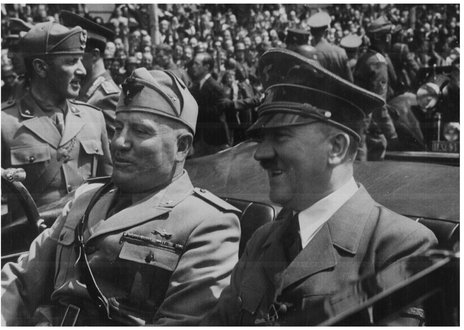
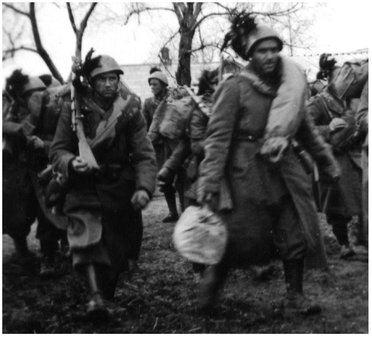
The Italian forces sent to Russia consisted of infantry divisions and completely lacked vital tank support.
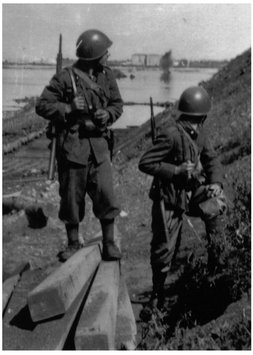
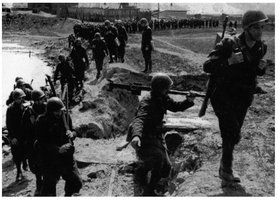
Italian infantry moving up on the River Don with the Italian 8th Army that totalled 235,000 men. Note the complete absence of heavy equipment such as tanks, motor vehicles or artillery. They would find no glory on the Eastern Front and ended up being overrun by Russian armour in the winter of 1942.
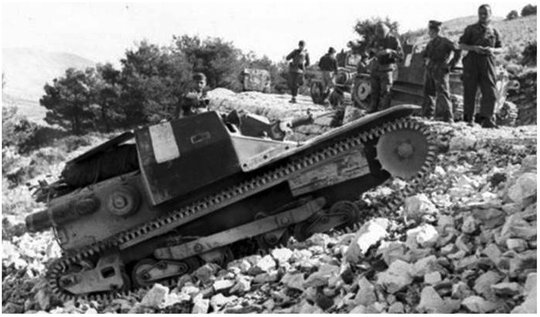
Initially the Italian 3rd Mobile Division went to war in Russia in the summer of 1941 equipped with about sixty L.3 tankettes; those remaining were sent home in the spring of 1942.
The Carro Armato L.6/40 seen here in North Africa was issued to the Italian Army in 1940–41 to replace the L.3 tankette series. It was essentially a scaled-up L.3 with a more powerful engine, torsion-bar suspension and a turret armed with a 20mm gun. While an improvement on its predecessor, it was still too lightly armoured and armed and was not a great success either in North Africa or Russia. The Soviet T-34 made easy work of it.
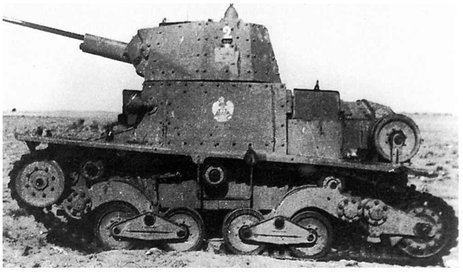
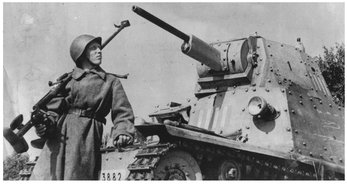
With a maximum of just 30mm of armour even Russian infantry could knock out the L.6/40 with their anti-tank rifles. It was the heaviest Italian tank sent to Russia: the Italian high command chose to hold back the M13/40 medium tank, which was instead deployed to Libya, Greece and Yugoslavia.
A graphic testimony to the fate of the L.6/40 during the Battle of Stalingrad in December 1942. The Italian 8th Army deployed only fifty-five of these tanks from a total of 283 built between 1941 and 1942.
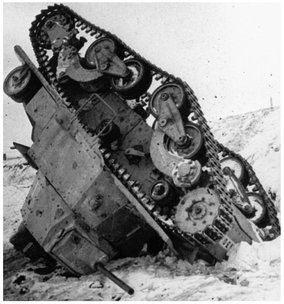
Another abandoned L.6/40. They proved to be more of a liability for their crews than a threat to the enemy.
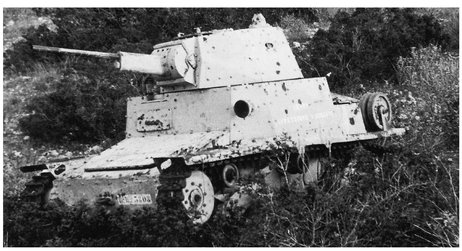
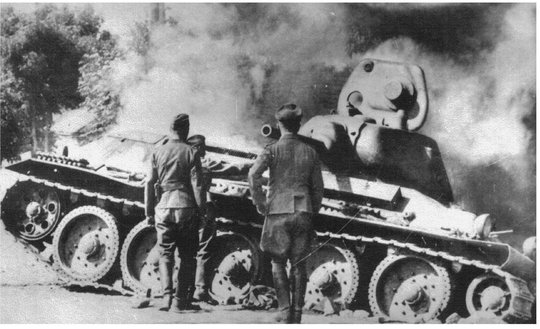
The L.3 and the L.6/40 were not capable of withstanding the T-34/76, seen here knocked out by admiring Germans in the summer of 1941. All the Axis armies on the Eastern Front struggled to counter the T-34, thanks to their inadequate tanks, anti-tank guns and artillery.
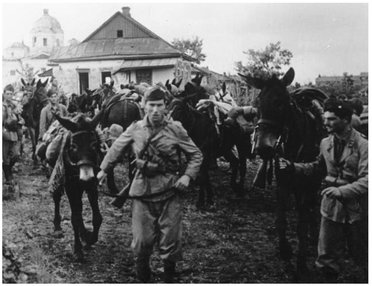
Having lost all their heavy equipment and 64,000 troops captured and another 20,000 killed, the Italian Army was withdrawn from the Eastern Front by the summer of 1943. This was the very point at which Mussolini fell from power following the Allied invasion of Sicily.
This was the fate of many Italians in Russia–captivity followed by a cold and hungry death.
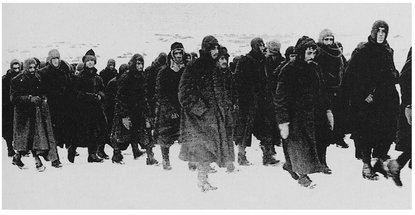
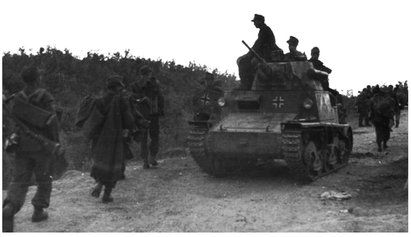
Following the German occupation of Italy in September 1943 the Germans took an unknown number of L.6/40s into service for anti-partisan and police duties.